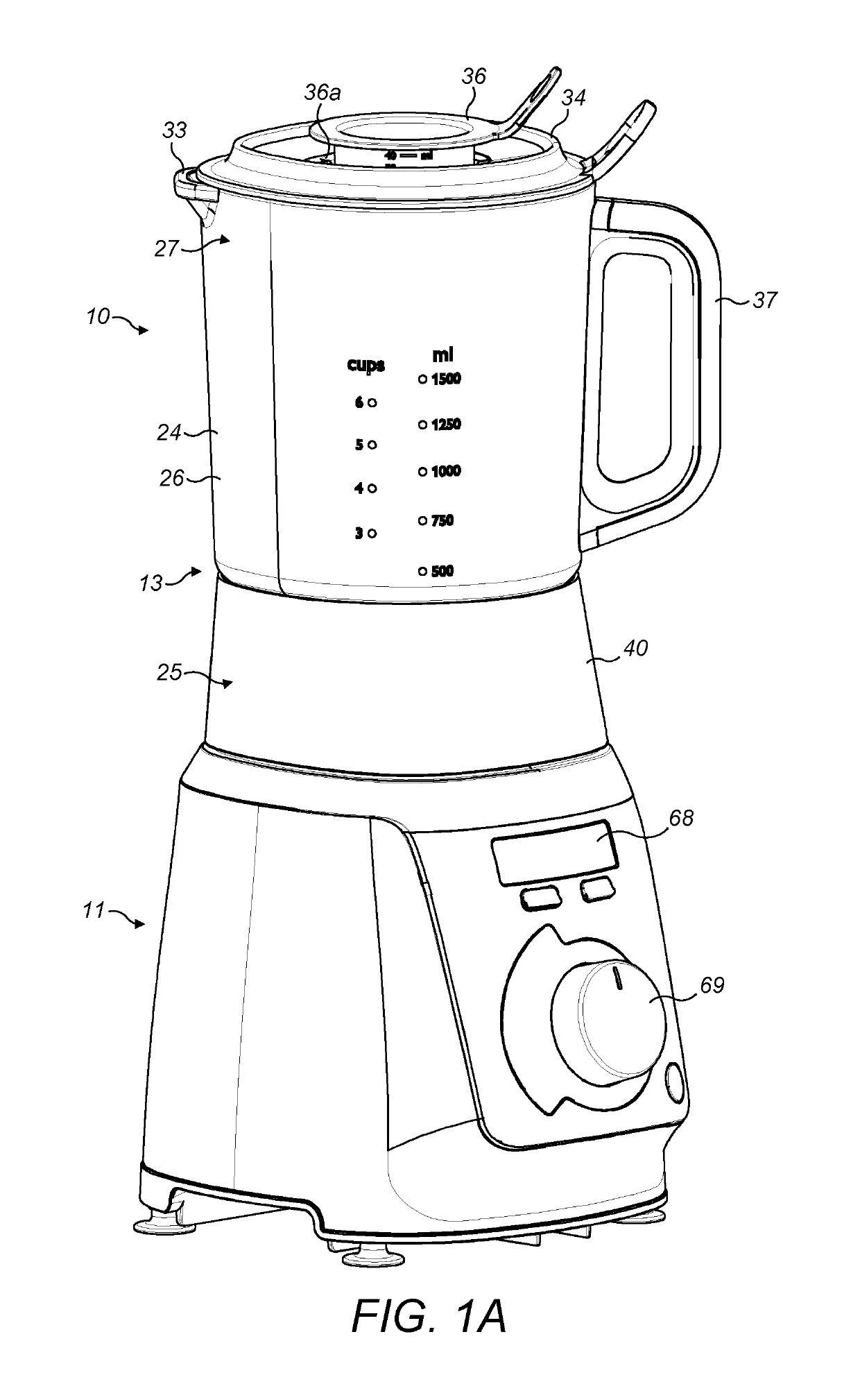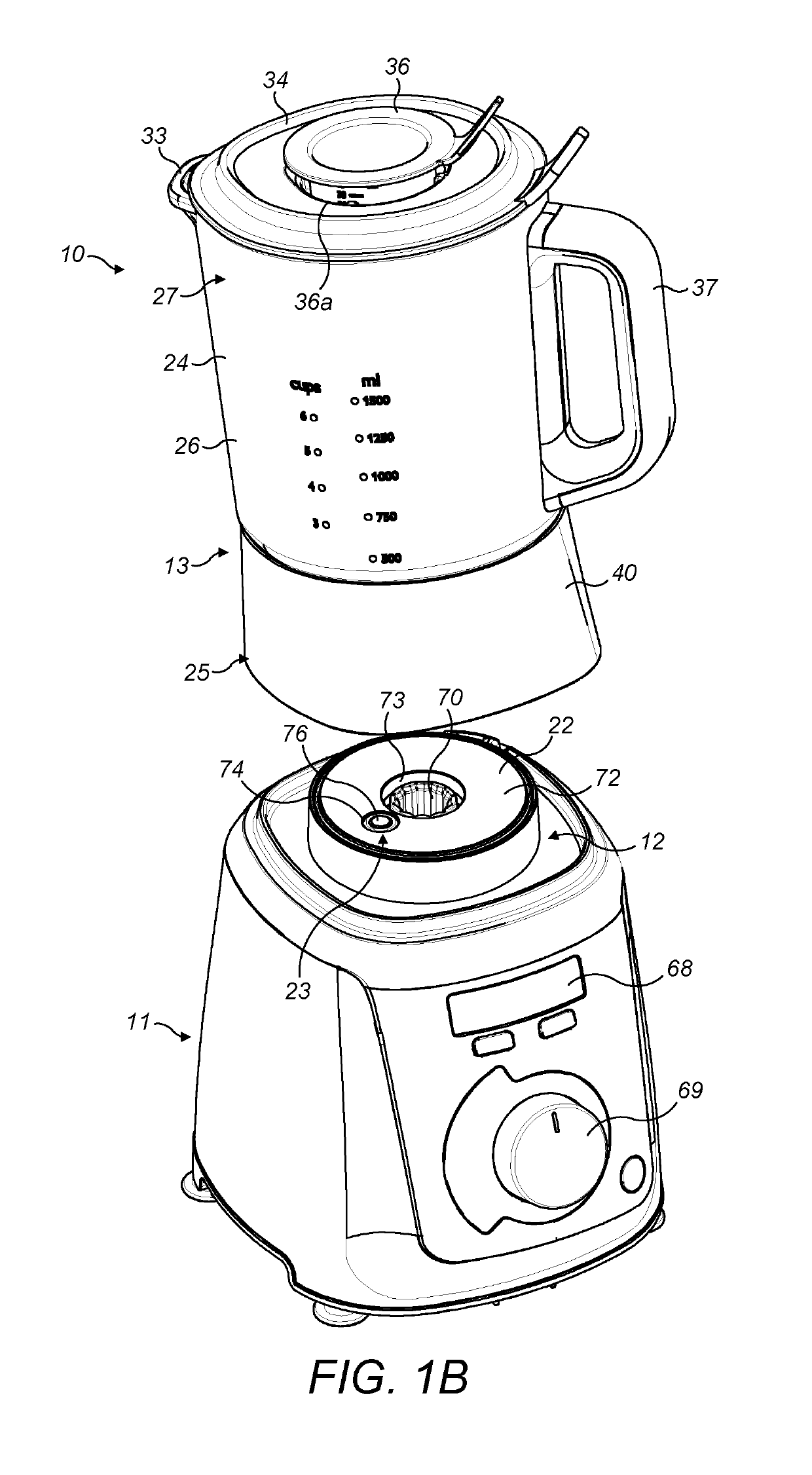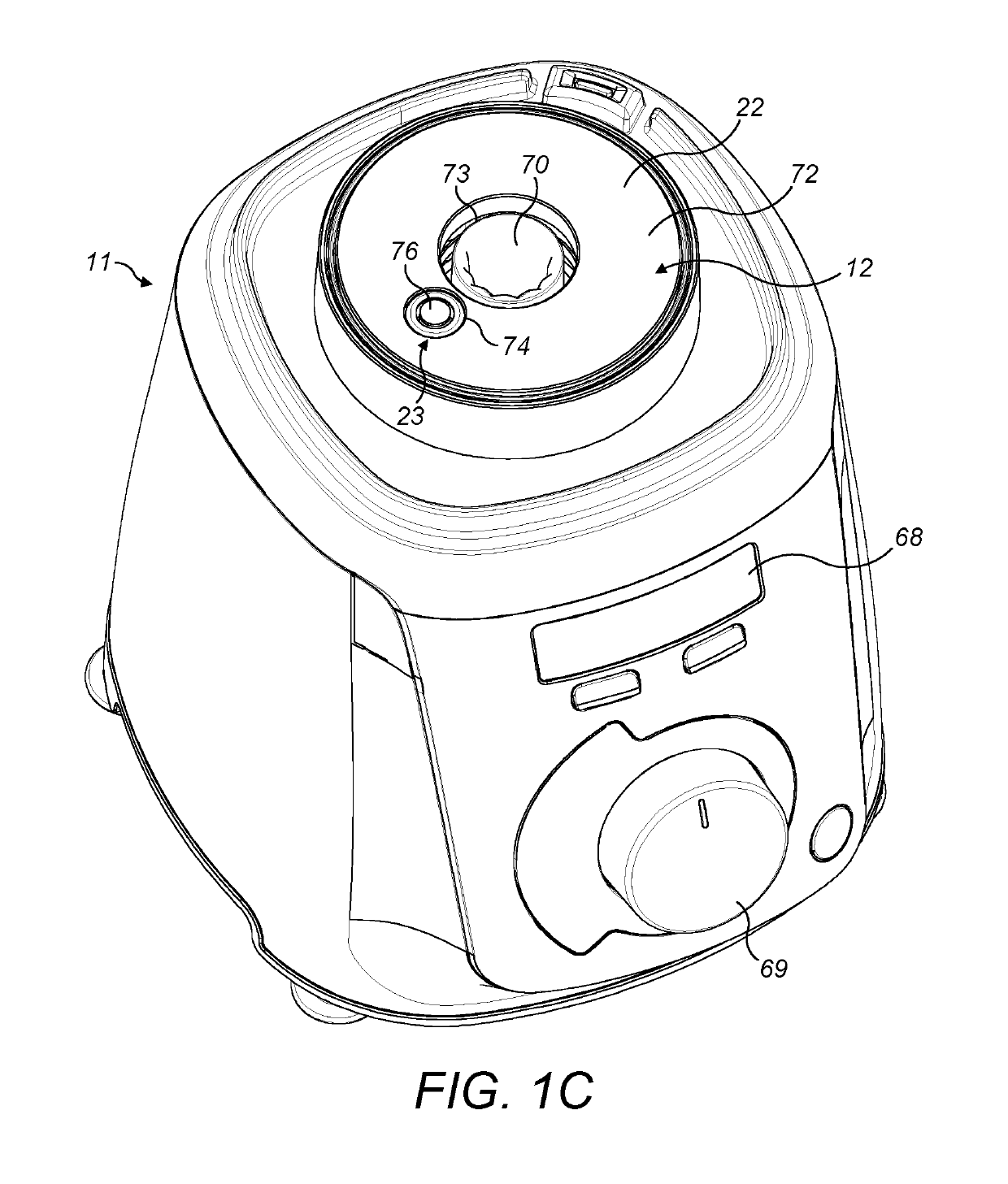Blender with temperature sensor
a temperature sensor and blender technology, applied in the field of blenders, can solve the problems of delayed temperature reading in the jar, inability to directly touch the food ingredients, and inability to accurately measure the temperature in the jar, so as to improve the accuracy of temperature sensing
- Summary
- Abstract
- Description
- Claims
- Application Information
AI Technical Summary
Benefits of technology
Problems solved by technology
Method used
Image
Examples
Embodiment Construction
[0047]Referring to FIG. 1A to FIG. 1D, a blender 10 for blending food ingredients in accordance with the invention is shown. The blender 10 described herein is for example a programmable cooking blender.
[0048]Throughout the description, terms such as ‘upwards’, ‘downwards’, ‘horizontal’, ‘vertical’, ‘bottom”, ‘top’, ‘upper’, ‘lower’ and so on relate to the orientation of the blender 10 as shown in FIG. 1 of the accompanying drawings.
[0049]The blender 10 comprises:[0050]a base part 11 comprising a heating assembly 12,[0051]a container 13 for receiving the ingredients, the container 13 comprising a bottom part 14 being manually detachable, the bottom part 14 comprising:[0052]a bottom plate 15 for contacting the heating assembly 12,[0053]a blade assembly 16 extending through the bottom plate 15, the blade assembly 16 having a first end 17 extending in the container 13 and comprising at least one blade 18, and a second end 19 facing the base part 11 and comprising a coupling element 20 ...
PUM
 Login to View More
Login to View More Abstract
Description
Claims
Application Information
 Login to View More
Login to View More - R&D
- Intellectual Property
- Life Sciences
- Materials
- Tech Scout
- Unparalleled Data Quality
- Higher Quality Content
- 60% Fewer Hallucinations
Browse by: Latest US Patents, China's latest patents, Technical Efficacy Thesaurus, Application Domain, Technology Topic, Popular Technical Reports.
© 2025 PatSnap. All rights reserved.Legal|Privacy policy|Modern Slavery Act Transparency Statement|Sitemap|About US| Contact US: help@patsnap.com



